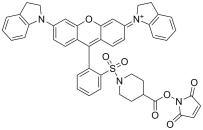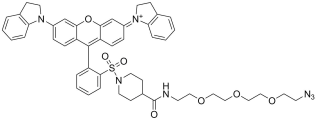Fluorescence quenchers are compounds that suppress light emission from fluorophores by absorbing emitted energy. Used in assays, imaging, and microscopy, they help monitor biological processes, detect specific molecules, and enhance visualization by controlling fluorescent signals.
Quenchers
Fluorescence quenchers are compounds that reduce light emission from fluorophores by absorbing the energy released during fluorescence. They deactivate the excited state of the fluorophore, preventing further light emission. Quenchers are crucial in fluorescence assays, imaging, and microscopy, where they help monitor biological processes, detect specific molecules, and enhance visualization.
Types of Fluorescence Quenchers:
- Organic Molecules: Quenchers like nitro compounds and aromatic hydrocarbons effectively suppress specific fluorophores, making them versatile for various assays.
- Transition Metal Ions: Metals like copper, iron, and mercury quench fluorescence through energy transfer, useful in metal-protein studies and environmental sensing.
- Nanoparticles: Gold nanoparticles and similar quenchers offer strong quenching abilities, particularly in proximity-based assays and imaging.
Applications:
- Assays: Quenchers detect molecules and ions, monitoring biological processes like enzyme activity and binding.
- Imaging: They control fluorescent signals, improving contrast and specificity in molecular imaging.
- Microscopy: Quenchers suppress background fluorescence, enhancing targeted visualization in complex samples.














